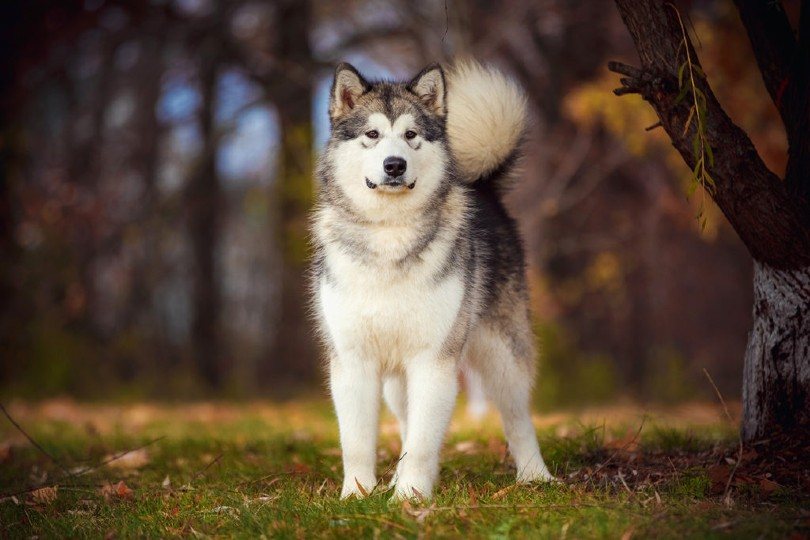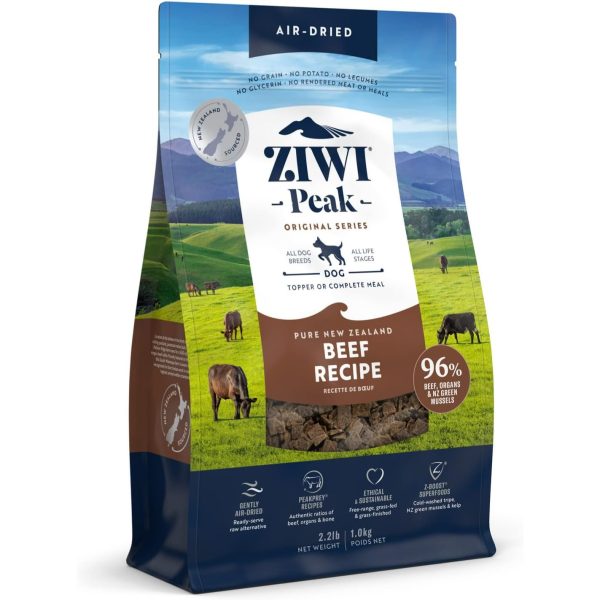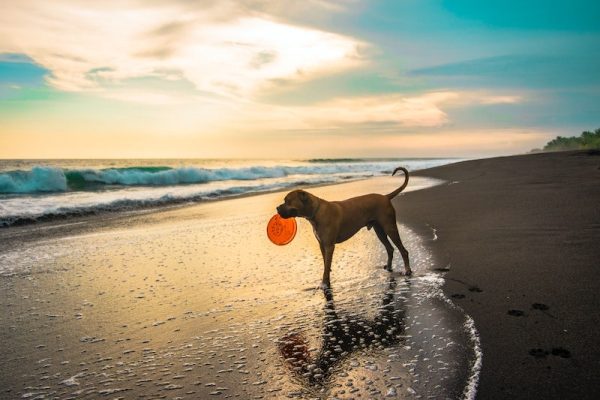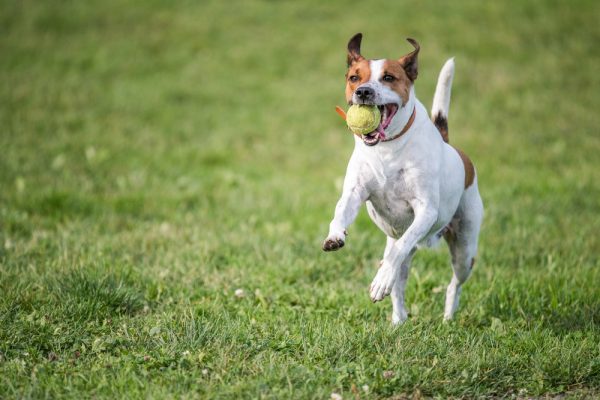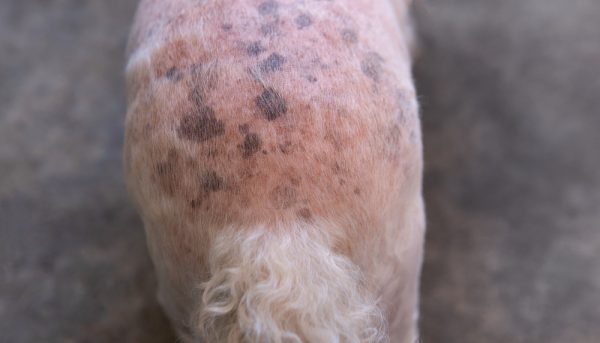In this article
View 8 More +The Alaskan Malamute’s undeniable beauty turns heads wherever he or she goes, but their appeal is more than skin-deep. An ancient Arctic breed, the Alaskan Malamute has spent thousands of years forging an unbreakable bond with humans by navigating with them the harshest weather conditions on Earth to deliver freight. Teamwork, loyalty, and companionship are traits still deeply ingrained in the Alaskan Malamute.
Read on to learn more about this intriguing breed and what these dogs are like as companions today.
Breed Overview
Height:
23–25 inches
Weight:
75–85 pounds
Lifespan:
10–14 years
Colors:
Gray & white, black & white, red & white, seal & white, silver & white, white, sable & white, blue & white, agouti & white
Suitable for:
Loving, active, and experienced homes
Temperament:
Affectionate, dignified, playful, devoted, strong-willed
The Alaskan Malamute’s ancestors were Siberian dogs that took the Bering Strait to America thousands of years ago. The Malamute is named after an Inuit tribe called the Mahlemiut—the tribe credited with developing this breed to pull sleds carrying freight over long distances in Kotzebue Sound, Alaska.
Their long history as working dogs has instilled in the Alaskan Malamute a strong sense of community (they worked in packs), loyalty, and perseverance. These traits have developed a dog that is affectionate and devoted with an iron will.
Alaskan Malamute Characteristics

Alaskan Malamute Puppies
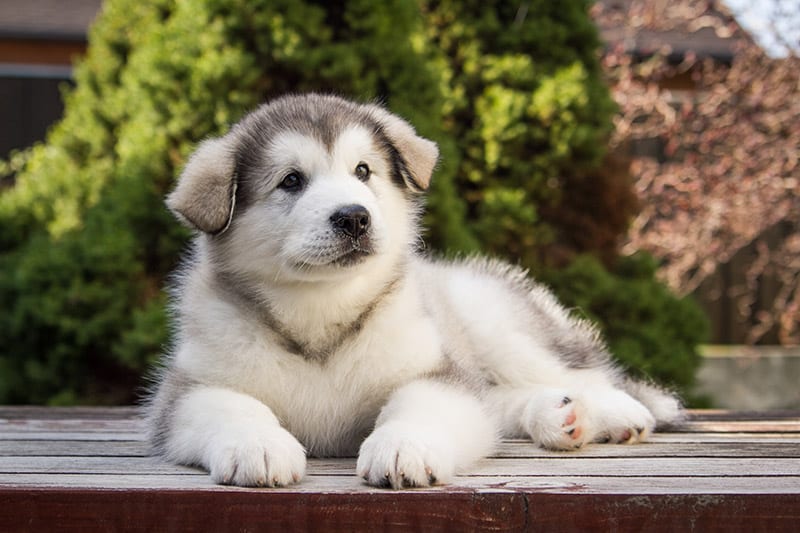
Alaskan Malamute puppies are inquisitive, playful, and sociable. They’re also at the crucial stage of their lives for training and socialization because once these dogs grow into large, strong adults, good manners and positive associations with people and other dogs are going to make all the difference. As puppies, Alaskan Malamutes learn quickly and are very receptive as long as you’re consistent.
If possible, please consider giving a dog a second chance by adopting an Alaskan Malamute puppy, older dog, or Alaskan Malamute mix from a rescue organization. If you’ve decided to go with a breeder, be sure to select a highly reputable one that is registered with a Kennel Club to reduce the risk of health and behavioral issues. Backyard breeders, pet stores, and puppy mills should be avoided at all costs.

Temperament & Intelligence of the Alaskan Malamute
Alaskan Malamutes are highly intelligent, hardworking dogs and, when socialized properly, are often described as friendly and loving. Despite their dignified appearance, they often maintain a puppy-like charm into adulthood with their playfulness and hint of mischief.
Many, either completely unaware of or not bothered in the slightest by the fact that they’re on the large and heavy side, are fond of a good cuddle on the couch with their favorite people. Take note, though, that the Alaskan Malamute’s sharp mind and pack-orientedness mean that you need to be prepared to take charge because they have a strong need for a kind, consistent, and capable leader.
It is for this reason that Alaskan Malamutes are usually best suited to people with previous experience training and socializing dogs. If their leader isn’t collected and confident enough, it’s easy for the Alaskan Malamute’s respect for that leader to dwindle, and this is when problems start to arise.
Are Alaskan Malamutes Good for Families? 👪
In loving homes in which consistent training and socialization are carried out, Alaskan Malamutes thrive and develop into wonderful family companions, including in homes with children. Setting firm boundaries and sticking to them is essential for producing a well-mannered canine, but it’s also hugely important that children are taught how to interact with the dog in a gentle and respectful way.
Do Alaskan Malamutes Get Along with Other Pets?
As long as you exercise common sense when introducing your Alaskan Malamute to other animal friends in the household and make sure everyone stays safe by closely supervising initial encounters, there’s no reason why a Malamute wouldn’t get along with their non-human housemates. Leashes and pet gates can be very useful for preliminary introductions as they give you more control.
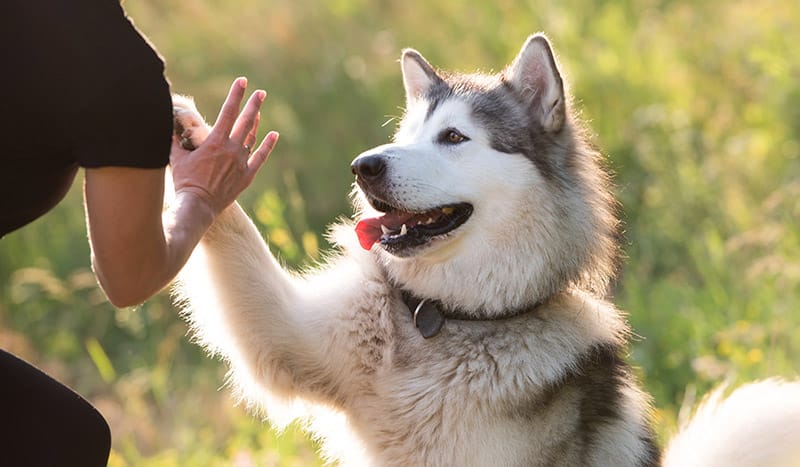

Things to Know When Owning an Alaskan Malamute
Food & Diet Requirements 🦴
Providing proper nutrition is key to keeping your Alaskan Malamute healthy both on the inside and outside. This means picking a nutritionally complete and balanced formula tailored to your dog’s specific needs, like how old they are (puppy, adult, or senior) and their weight. Some dogs need a particular kind of food because of health issues like, for example, kidney conditions, joint conditions, and obesity.
It also means feeding appropriate portion sizes to prevent the dog from becoming overweight or underweight. If you aren’t sure which formula would be right for your Alaskan Malamute, speak to your vet. On that note, some people prepare their own dog food at home, but it’s challenging to strike the right nutritional balance with homemade food, so this should only be done under veterinary guidance.
Exercise 🐕
Alaskan Malamutes need a moderate-high amount of daily exercise. You can provide this by walking your Malamute a couple of times a day and giving them free-roaming time in a secure area. They also love to get some energy out with play sessions and are easily pleased when it comes to the type of exercise you do with them. In addition to walking, you can take your Malamute on hikes and jogs when they’re fully grown.
Training 🎾
Malamutes score highly on the American Kennel Club’s trainability rating because they’re so intelligent and they tend to respond well to consistent training and socialization. On the other hand, if you let too much slide, your Malamute will quickly work out that you’re not consistent, which can lead to them becoming bossy and thinking that they are the pack leader. The result is an unmanageable dog that gets up to way too much mischief.
This happens because Malamutes, while very devoted dogs, have a strong pack mentality and thrive when they feel a sense of structure within a group. They respect kind but firm leaders who set healthy boundaries in terms of behavior but are smart enough to know when their leader isn’t up to the task.
On that note, you should never use physical punishment on a dog, no matter how frustrated you feel—it’s cruel and breaks down that all-important bond. It’s always a good idea to enroll your dog in obedience classes to get a helping hand, especially if you’re new to training dogs.
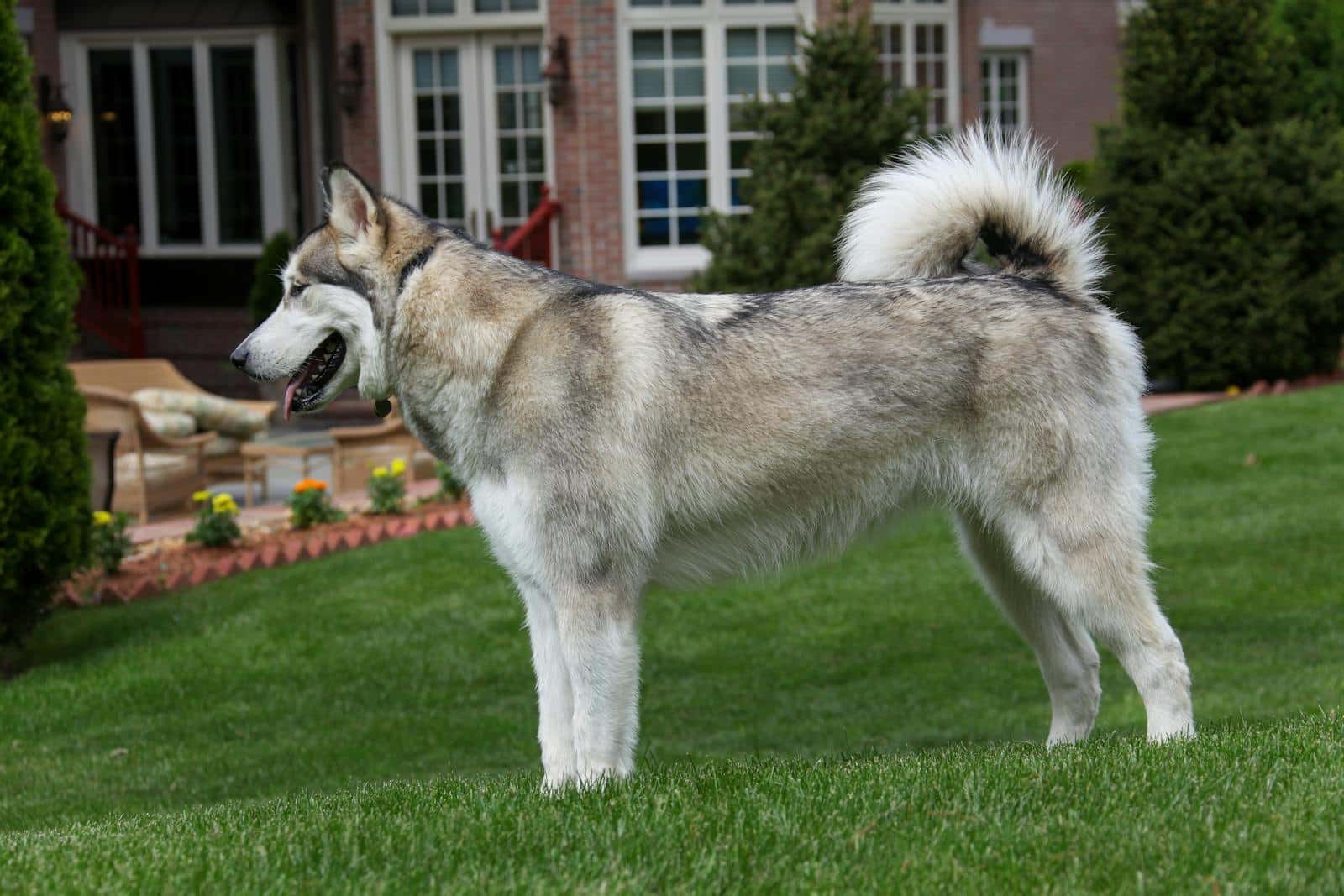
Grooming ✂️
The Malamute adapted to working in freezing conditions so has a double coat made up of a rough outer layer and a soft, dense undercoat. They shed throughout the year and heavily during shedding seasons, so their coats can be a challenge to maintain, but not impossible.
You can keep the coat in good condition by brushing it daily with a pin brush, and a comb helps with the smaller, more detailed areas where mats may form. It’s sensible to invest in a good deshedding tool to use during the shedding seasons, as your Malamute will lose a lot of dead hair at this time. It’s also important to trim your Malamute’s nails regularly because overgrowth causes pain and mobility issues.
Health and Conditions🏥
Like other breeds, Malamutes have the potential to develop health conditions, and some conditions have been specifically linked to them. Hip dysplasia—a condition that describes a loose hip joint—is one such condition, and this is often associated with large breeds. Responsible breeders conduct health screenings to reduce the likelihood of these conditions, but it’s not a guarantee that a dog will never experience any health issues.
- Minor skin conditions that receive treatment
- Hip and elbow dysplasia
- Chondrodysplasia
- Hypothyroidism
- Idiopathic polyneuropathy
- Day blindness
- Thrombopathia
- Von Willebrand’s disease

Male vs Female
Male Alaskan Malamutes are typically a bit bigger and heavier than females, with males reaching up to 25 inches in height and females reaching up to 23. Weight-wise, males weigh up to 85 pounds, whereas females weigh up to 75.
In addition, unneutered male dogs are more prone to territorial behaviors, roaming, and urine marking, while unspayed females in heat display behaviors like urinating more frequently, irritability, and clinginess. You can discuss spaying and neutering with your vet to reduce hormonal behaviors.

3 Little-Known Facts About the Alaskan Malamute
1. Malamutes Have Performed a Variety of Jobs Since They Were Developed
Alaskan Malamutes were developed as sled dogs, but they were also used for hunting and guardianship. In addition, working in the Arctic, their humans were at risk of bear attacks, so protection was another job for the versatile Malamute.
2. Malamutes Provided Warmth in the Freezing Conditions
Though developed primarily as working dogs, Malamutes would also sleep in the tribe shelters to provide extra warmth for both the adults and children inside. This closeness to humans throughout history, both at work and at home, could account for why the Malamute is known for being such a loyal and devoted dog today.
3. The Alaskan Malamute Nearly Went Extinct
In the late 19th century, the breeding of sled dogs with other breeds ramped up to keep up with the Gold Rush demand for working dogs. The Mahelemut people’s isolation meant that their dogs were untouched by this mixed breeding, which saved the Alaskan Malamute from extinction.
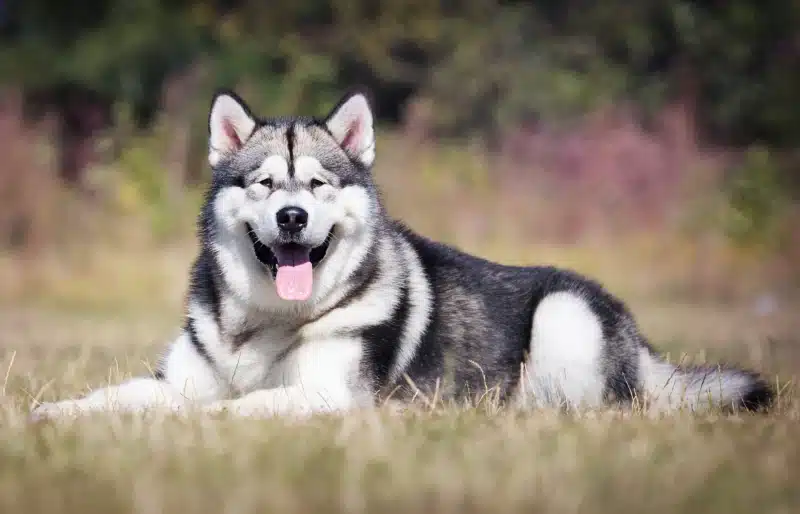

Final Thoughts
Alaskan Malamutes are often very endearing companions that get along well with everyone, including new people, but they’re not for everyone. They have lots of energy and a brain so sharp that it’s sometimes used to hoodwink unwitting first-time dog owners, so they may be a better fit for a home with an experienced dog parent.
Featured Image Credit: Tatyana Kuznetsova, Shutterstock
